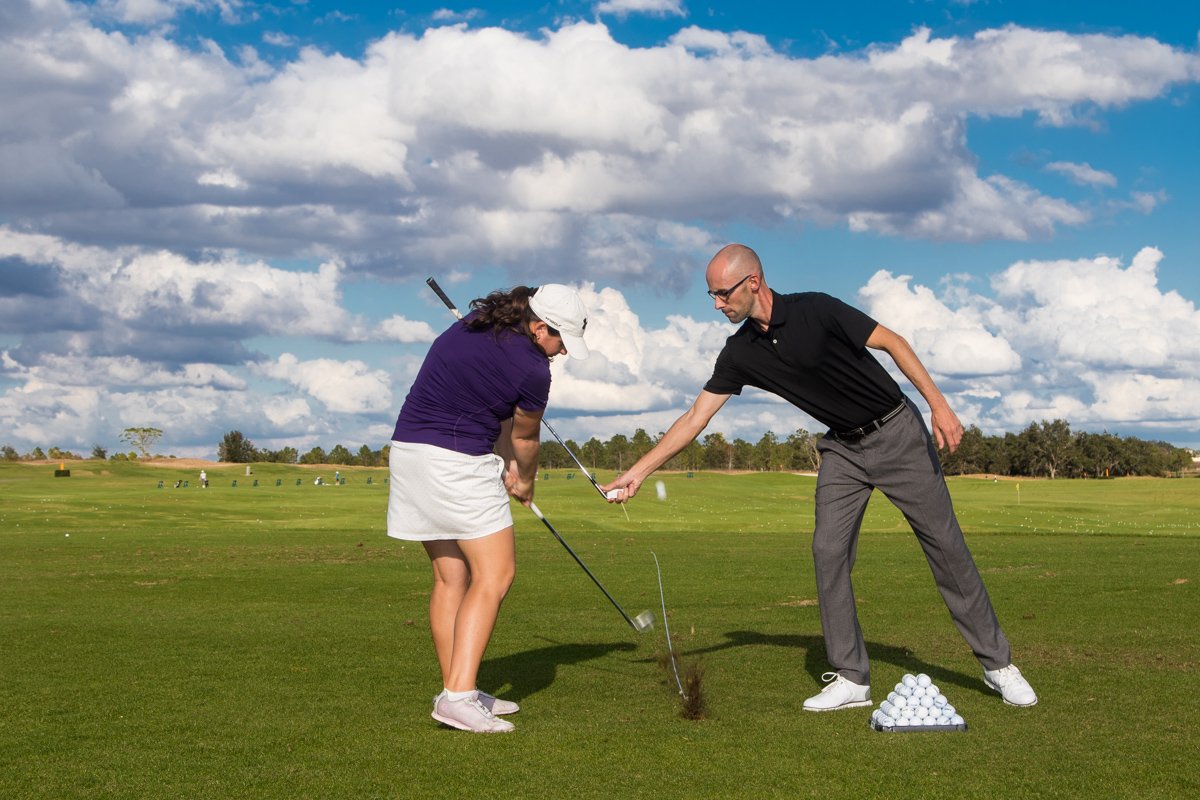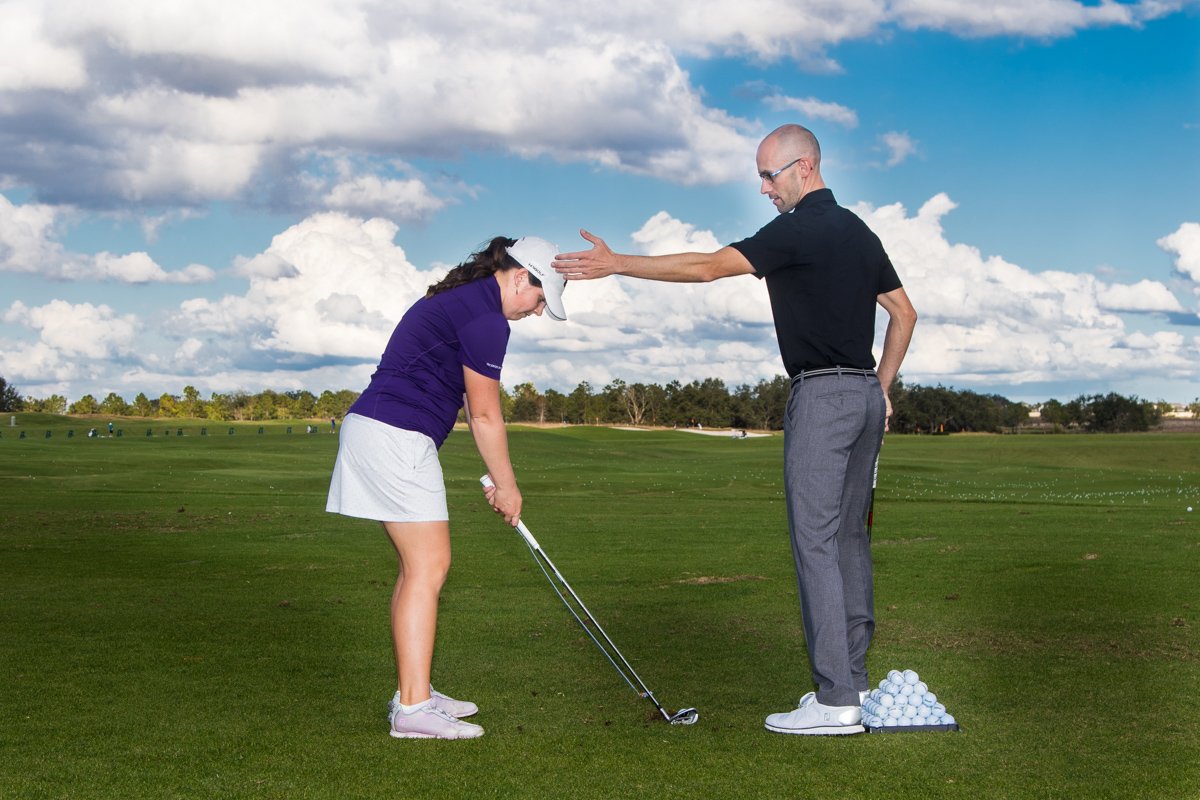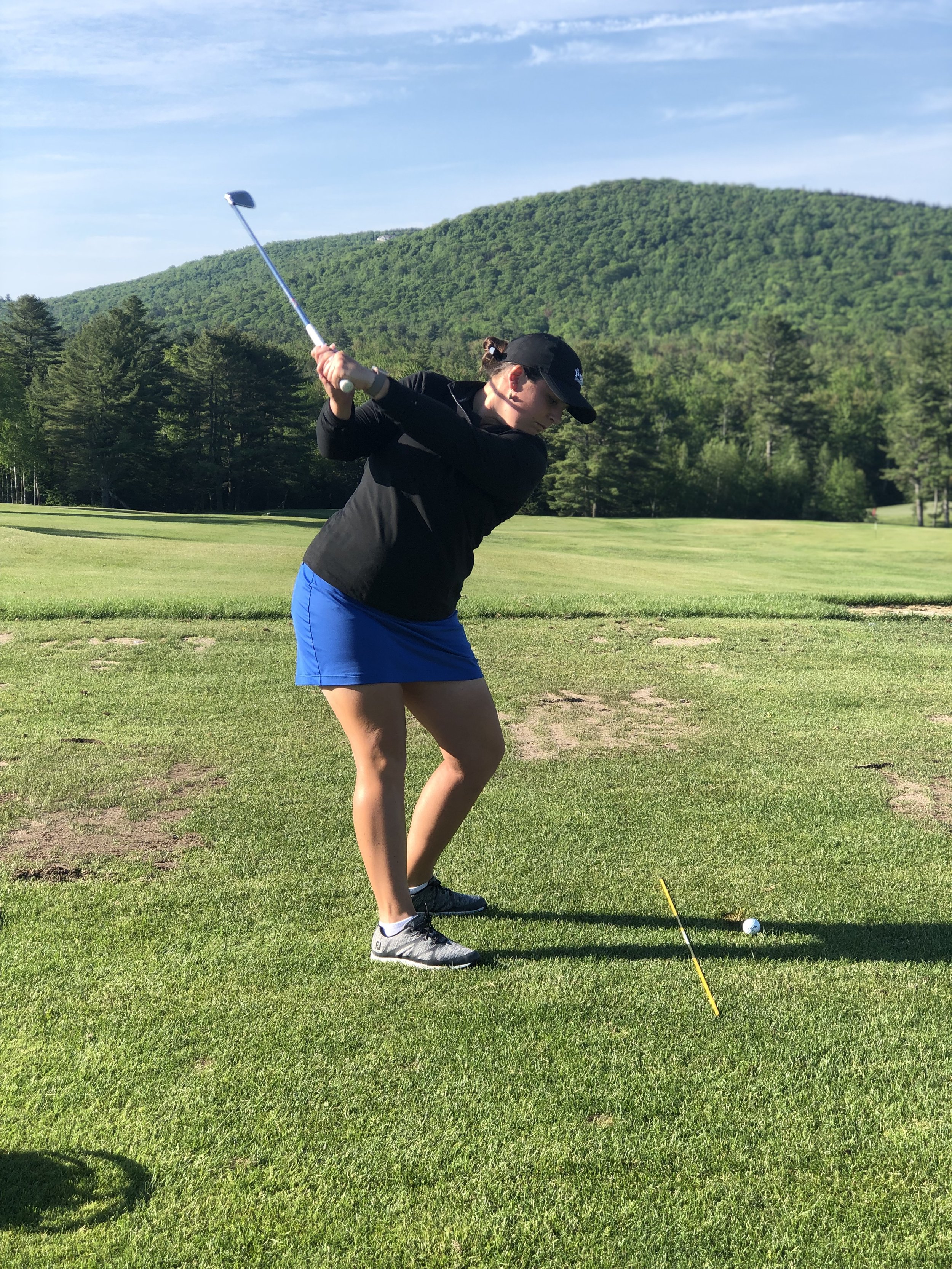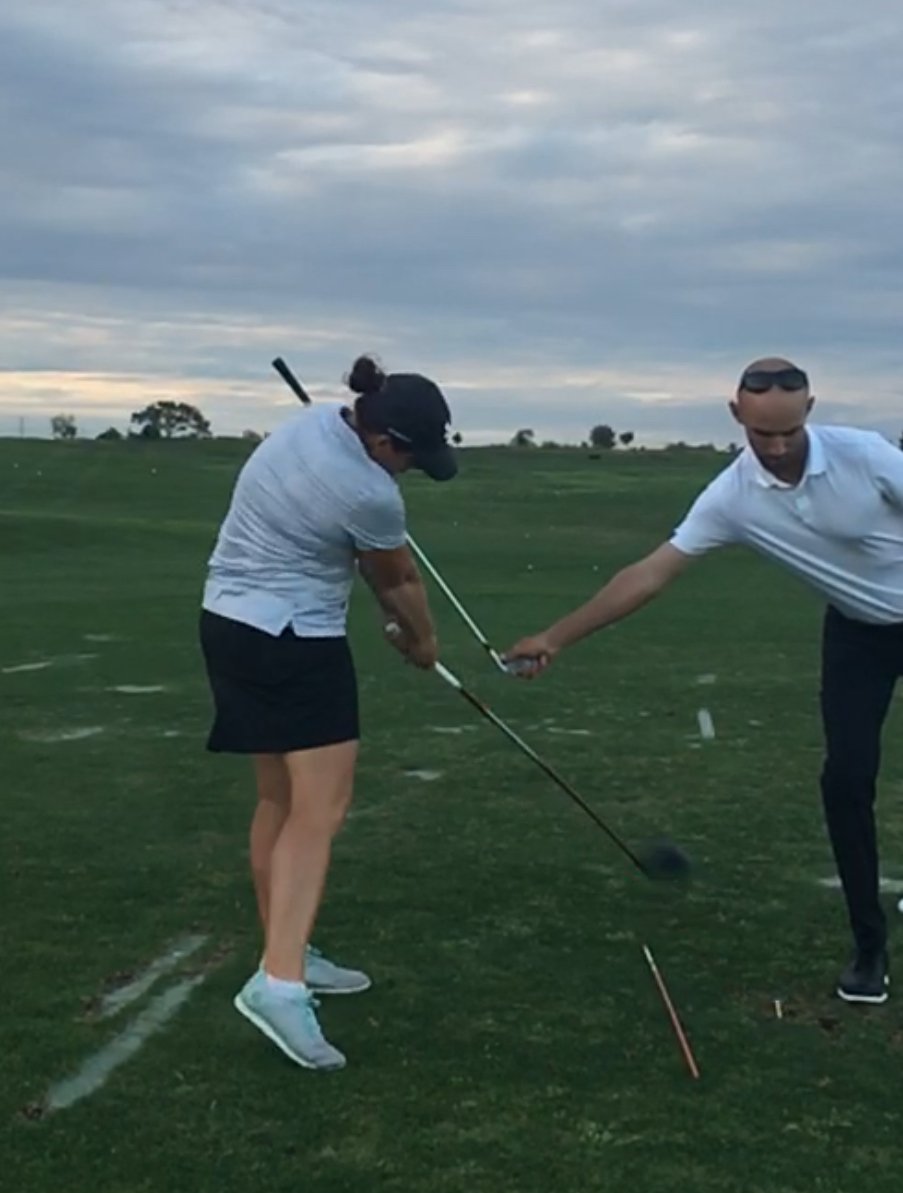Case Study - Aimee Caligiore
I started working with Aimee in November of 2017. She was an All-American in college and was playing on the East Coast Women’s Professional Golf Tour (then the NWGA). She was struggling with her ball-striking, partially due to a case of tennis elbow that was getting worse by the day. She had to practice with a tensor bandage on her elbow each day, was hitting balls off of a short tee to minimize the collision with the ground, and was in so much pain when she was done that she couldn’t open her car door with her left hand.
Before we started working together, I told her a number of times that her injury was a result of how high her hands were exiting in the follow through, more on that below, and the amount of rotation of the face that was taking place.
To me, the goals in the beginning were very simple, get healthy and get better. Lesson one tackled both of the goals head on.
original swing
When we started, Aimee’s swing had a lot of shifting off of the golf ball, and loading up her trail foot with the goal of creating the maximum power possible. In reality, this shift off the ball was creating a low point that was behind the ball and a shaft that was leaning almost backwards at impact, which added loft and took distance away from her shots.
You can see in the above pictures how Aimee moved off the ball (to her right side) in the backswing, and tried to turn her body as fast as she could in the downswing. This is evidenced by her head staying behind the circle in the downswing and her weight pushing back through impact.
corrections
Step one was to get the pivot centered in the backswing. I explained how she had a lateral backswing and a rotational downswing, and we were going to flip those two around. The best players in the world have rotational backswings, and lateral motion in the downswing.
Four words were the cue to create this new sequence:
The first two words were, “shoulder down.” This referred to her left shoulder moving down in the backswing, keeping her head more centered. The second two words were, “weight forward.” This was all encompassing, starting with address. We set up with weight forward at address 55/45 favoring the lead foot, kept it there in the backswing and then crushed an imaginary can in the downswing to get her weight going forward faster in the downswing.
The results you can see in the pictures above tell a story larger than four words can say. For the first time in her golfing career. she was delivering the club with less loft than was stamped on the sole of the club. The compression was audible and the ball was flying much further with less overall effort. Win win.
One other piece that had to be tackled in the opening session was the exit of the hands in the follow through.
Lowering the exit in the follow through required a couple of adjustments. First, we needed to get her weight more forward (addressed in the first section). Second, we needed to be able to visualize the path Aimee’s hands should travel on. This was done holding a club to her left hand, simulating the plane of the swing (visible in the picture on the right). Lastly, a reference for turning of the joints. The cue, “90-90-90” is used to signify 90 degrees of rotation with the trail shoulder, hip, and knee.
The byproduct of this lowered exit is slowing the closing of the club face. You can see in the above comparison photo the difference in alignment of the club face. In the left photo, the face is closed to the shaft, pointing below the horizon line. In the right picture, the face is more open. These amounts will differ from player to player but the change did more for Aimee’s health than it did for her ball flight.
RESULTS
The next 18 months were a journey of owning the changes we established and getting them on the golf course under competitive conditions. Like any golfer, the biggest challenge was taking new mechanics to the golf course and having them show up when it mattered most.
The most important metric I tracked on a regular basis was the health of Aimee’s elbow. By “tracked,” what I really mean is asking her a few times a week “hey Aimee, how is your elbow?” It didn’t take long for her to say, “it’s fine, you can stop asking now!” No matter how great a golfer is, if they are hurt, they can’t compete.
None of the changes we made would mean anything if I wasn’t able to demonstrate some improvement in Aimee’s results. With competitive players, it is much easier to gather the required data, as leaderboards are readily available, though stats are, in most cases, upon the player to track.
The chart below demonstrates Aimee’s Winter and Spring 2018 stats. You will see a trend in the greens in regulation, starting at 35% at the DeBary event, nearly doubling to an average of 67% in her last five events.
Without this data, it is almost impossible to make any judgements on the success of the work we did together. There are many facets of the game that go in to scoring, so it is difficult to compartmentalize at times and go all in on one area. We knew that the leader in GIR on the LPGA Tour averaged 72% (13 of 18) of her greens in regulation, so we used that as a measuring stick on a weekly basis.
To aid with course management, we utilized Scott Fawcett’s DECADE system. For those not familiar with DECADE, it is a process for identifying appropriate targets based on a mathematical formula. For more information, visit https://decade.golf/.
Of course, there were small adjustments to be made adding some options to Aimee’s arsenal, like adjusting trajectory and reducing spin. Her technical work remained the same throughout the process; make a centered backswing, get weight forward and swing on an arc in her follow through.
One of the highlights of our work was the 2019 Hartford Women’s Open, where Aimee won her first professional tournament. After spending a few years grinding on various local tours, being able to lift a trophy is a big deal. This wasn’t her end goal but rather a sign that the work she did was necessary to take her game to the next level.
Working with player’s like Aimee is truly what makes coaching enjoyable. When a student has long term vision and a commitment to the daily disciplines, the sky is the limit. In these case studies, it’s my goal to show not just the technical work, but also to give a behind the scenes look at why these changes were necessary, and then follow up on what the results were.
Understanding how each piece fits together, and in what order is the essence of improving at anything. If you only take one thing from this article, I hope it’s seeing that your own breakthrough is possible with the right information and a little patience.











